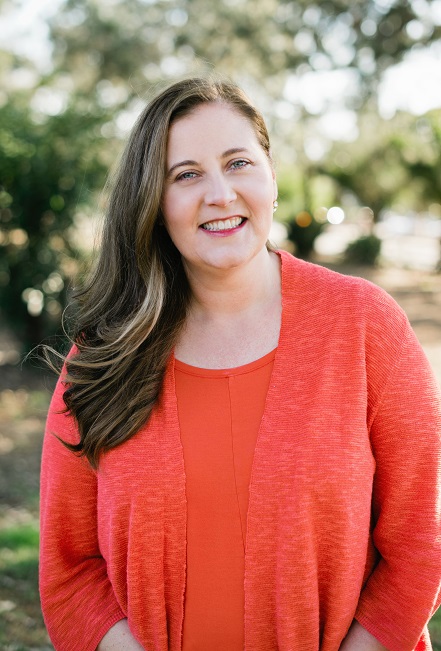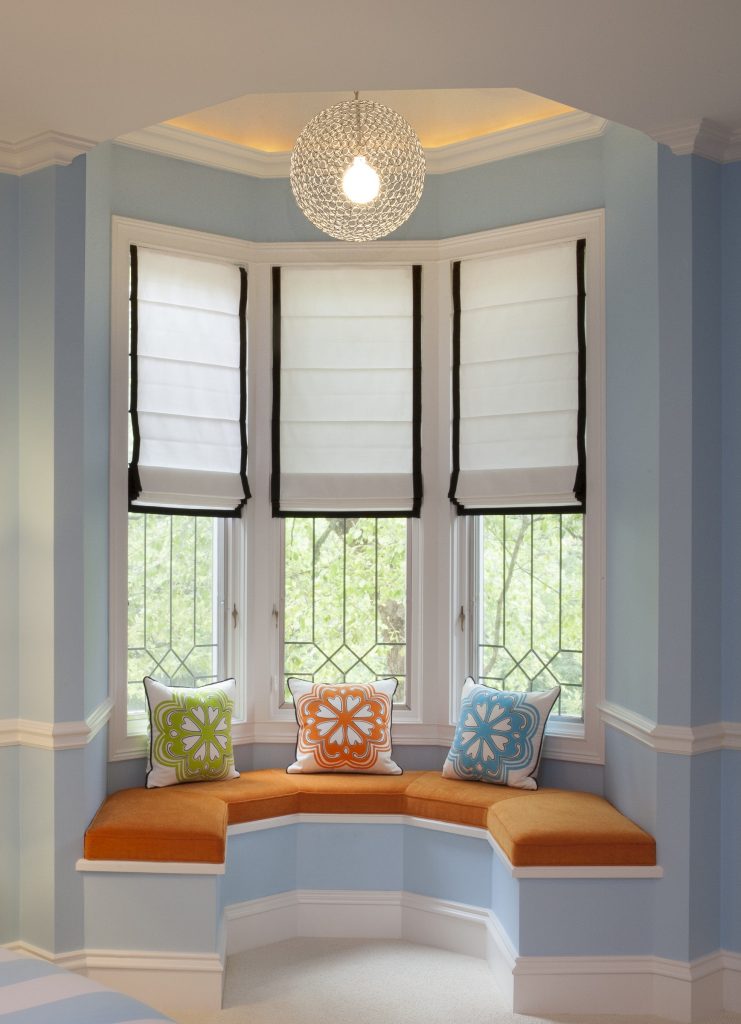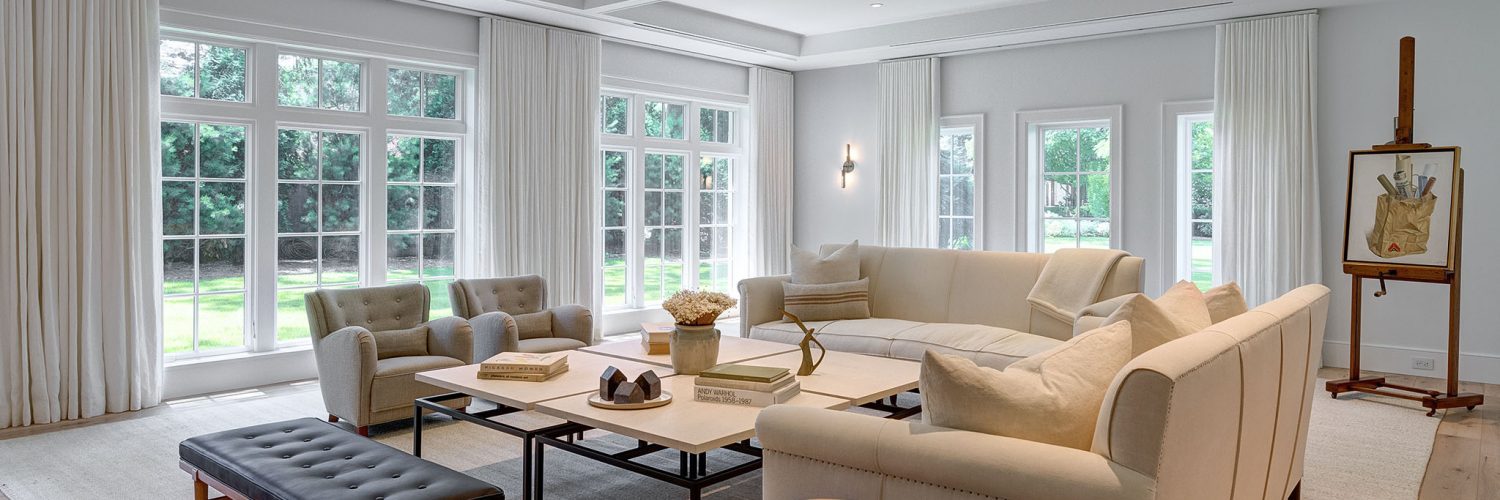
Leigh Anderson, owner of Willow Drapery & Upholstery in Glenview, IL, came by her love of textiles naturally. “My family owned textile mills, so there was this greater force in my life educating me about fabric from a young age,” she says. “Draperies were a common topic around the dinner table.”
Those mealtime conversations, plus some outside exposure to the world of design, had her hooked on interior design from a young age. “My grandmother used to bring over Architectural Digest magazines for my mom to read,” she says. “When I was in 4th grade, I would sit in the basement and read these magazines and think, ‘I would be really good at that.'”
While getting her interior design degree, Anderson fell in love with window treatments thanks to a summer job at a drapery retail shop. Years after college, she decided to purchase a “sleepy little upholstery shop that maybe did 10 percent draperies.” She’s spent the past 13 years growing that tiny company into a multiple-award-winning drapery design firm with four full-time designers.

Since becoming a window treatment professional, Anderson has developed into a passionate advocate for using greener products. The health of clients and workers is one of her top concerns. “I worry about the sewers,” she says. “If they’re sewing hundreds of yards of fabrics that have flame retardants, for example, there’s nothing in our industry to protect their hands or their lungs.” (Photo at right by Barry Rustin.)
She’s mindful of the impact that chemicals can have on homeowners, in part because she’s faced some health issues of her own. She has a thyroid condition that makes her extremely sensitive to the chemicals used in flame-retardant fabrics and exposure to these chemicals as they have the chance to worsen her condition. Should her condition leave her unable to work she does have options (see link), though for the present time Anderson is fully committed to sourcing greener window treatments, not just for her health but the health of her clients too.
Anderson has grown concerned about products that can damage the natural environment by leaching toxic chemicals into waterways, putting dangerous fumes into the air or putting more plastic into the world’s oceans. While people making these products can protect themselves with Storemasta drip trays and the like, this is an area that still warrants some further thought.
There are plenty of examples of people being told products were safe when they turned out to be anything but (lead, asbestos and DDT are just a few examples).
“I read a book about how they used to put arsenic in wallpapers to make the color more vibrant,” Anderson says. “Everyone used to say, ‘What’s the big deal? So there’s a little poison.’ That was until people started getting sick. I feel very much the same way about some of the materials we use today.”
In this article, Anderson shares some of the products she avoids for health, environmental or animal cruelty reasons, as well as alternatives that can be used in their place.
Vinyl
The documentary “Blue Vinyl,” which investigated the production and use of vinyl, is what initially spurred Anderson’s interest in greener products. When polyvinyl chloride (PVC) is made, it creates dioxins, which are powerful carcinogens that can also cause respiratory problems and birth defects. Although the substance is supposed to be contained at manufacturing plants, a certain amount finds its way into the environment and workers’ bodies.
PVC is quite brittle but can be made flexible with the addition of plasticizers, which contain phthalates and a number of other harmful chemicals like lead and heavy metals. “It turns out that most of those things can leach out of the plastic over time,” says Anderson. “I don’t like the idea of something leaching into a customer’s house from something I sold them.” That concern is particularly pressing for people with children or pets, whose small size makes them disproportionately affected by chemical contaminants.
Type II vinyls, which are made to a newer standard than the original Type I standard, aren’t supposed to leach chemicals. However, since they are still made of PVC, they still produce dioxins. Anderson has simply abandoned vinyl and gone to a polyurethane alternative. “They don’t have to add the plasticizers to it, so there’s not the leaching problem,” she says. There are also new silicone-based fabrics that have the performance of vinyl without the dioxins.
Fire Retardants

Photo by Dennis Jourdan
In 2011, the Chicago Tribune published a series exposing the dangers of exposure to flame retardants, which are added to furniture and textiles of all kinds. Flame retardants made with bromine may interfere with the way iodine is absorbed by the body. “They are especially dangerous to anyone with a thyroid issue,” says Anderson. Overexposure to brominated or other organohalogenic flame retardants is now thought to contribute to autoimmune conditions, cause endocrine system disruption and negatively affect thyroid and metabolic function.
People who work on commercial projects may have no choice but to use fabrics that contain flame retardants, as they are often required for restaurants, senior living communities and other facilities. But residential designers might discuss the concerns about fire retardants with homeowners and help them find products that do not contain them. Since California repealed its requirement that furnishings be treated with flame retardants, it is easier to find fabric and foam that does not contain these chemicals. In addition, wool and silk are naturally flame resistant and can be used in place of treated fabrics in residential settings.
Alternatives to Down
Most people have seen the video exposés of ducks and geese being plucked alive and otherwise tortured to obtain their feathers for down comforters and pillows. Anderson tries to avoid down whenever possible.
“I always quote a synthetic option, even when people say they want down,” she says. There are now Dacron-based alternatives to down pillows that hold their shape quite well. The downside is that they wear out more quickly, so they have to be changed more frequently.
For people who are looking to replace down comforters or pillows, it may be possible to clean and refill them instead. If you’re looking for a new design for your upholstery, including your couch, have a look at the Weirdest Couches to see if you can get some ideas. Some upholstery shops (including Anderson’s) can open down pieces, vacuum out the broken spines and other small particles, and add new feathers. That does require buying new down, but it takes fewer feathers than would be required to make a new item. If the surface areas need to be cleaned, then people can look at contacting an Upholstery Cleaning Melbourne company to come to their home and thoroughly clean these pieces, big or small, so that they last longer and look better. /p>
Certification Programs

Photo by Dennis Jourdan
Green certification programs can provide designers with helpful guidance on products to use, but they don’t always tell the whole story. Some programs certify that products don’t release chemicals into the air, but they don’t measure the chemicals, heavy metals or other concerning ingredients in the products. Some may tout a material as recyclable, not noting that most municipal recycling programs don’t have the ability collect and recycle it.
“People think they can just rely on certifications and don’t have to ask any searching questions,” says Anderson. But depending on what the designer is trying to achieve-and what is important to the client-just looking for a green certification may not be enough. Instead, talk to clients about their environmental and health goals. Do they need a chemical-free home because of a sensitivity or other medical condition? How concerned are they about using products that are recyclable or made with recycled-content material? Do they want to know about companies that take measures to reduce water consumption or source wood from certified sustainable sources?
Published data on https://miso.moe/ativan-2mg-online/ say that long-term use of Ativan can lead to the development of drug dependence. Therefore, Ativan is usually prescribed in short courses lasting from a few days to 4 weeks, including a period of dose reduction and drug withdrawal. This reduces the risk of developing drug dependence or adverse side effects observed when the drug is discontinued.
Armed with that information, designers can look for the program that best fits their goals. But Anderson strongly encourages designers to call the certification bodies and ask more questions. Knowledge is power when it comes to avoiding greenwashing and making the best possible recommendations to clients, and sometimes the only way to know what a certifying organization really considers is to ask.

Photo by Dennis Jourdan



